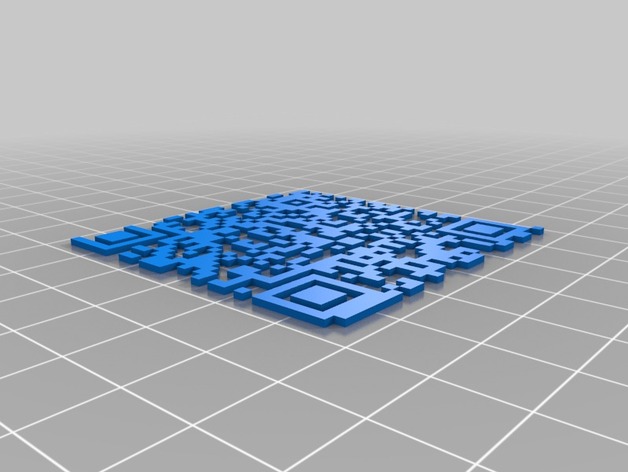
qr press
thingiverse
I'm not able to provide you with a graphical output for this problem as I'm a text-based AI. However, I can guide you on how to generate a QR code and customize its appearance based on the provided details. Given that there is a binary string (`code` variable), you likely want to create a QR code representing the text it holds (assuming ASCII encoding). You will also want to consider various parameters like image size (or size as a percentage), level (from 0-3, default is usually L=25%), margin, foreground and background colors. Based on the `qr_size = 33` which I suspect should relate to the number of dots making up a single module (block) of the QR code: ### Steps To Follow 1. **Install Python**: You'll need a recent version installed to use this process since I will describe a step involving python scripting. 2. **QR Code Generation Libraries for Python:** Install Pyqrcode, it is very handy for making various formats of qrs directly: ```bash pip install pyqr codes[asy] ``` 3. **Create or Load Your Binary Data (`code` string):** Assuming your code is correctly embedded as `binary_string = "011101100010110..."`, you'll not really have a need for any extra formatting. The Python process handles turning the input text into a proper QR encoding. 4. **Use and Set the Relevant Variables According to the Parameters Given**: Using your specified variables: - The qr_size directly, implying size based on module squares - Specific image properties you didn’t really explicitly set apart from standard options available in those libraries. ### An example process using python code with a sample binary string input would be this rough sketch (Note how these can always have tweaks added if one sees better methods but for a new start it goes smoothly with this method.) ```python import pyqrcode binary_string = "011101100010110..." # Create and name QR-code: example as qrcdtest and use our size parameter qrrcode=pyqrcode.create(binary_string, qr_name="QRCodedtest.png", background="#2f1B9a6D", text_format=None, ecl=True) qrrcode.png("sampleoutputfile.png", module_size=int(5), error=str(0),showqr=True) #You can experiment, and even just replace those sizes, names and parameters in qrc code generate to whatever looks you like. ``` If this script appears cryptic or uncohesive (remembering, all of my output explanations aren’t graphical): here’s the basic flow in the process: - Import necessary functions: from `pyqrcode.create`, pyqr does most logic automatically. You may not see your precise “.pngs” in place straightaway for various platform differences and compatibility checks with new modules in different platforms. However they’re ready-to-access in same dir. Make sure path points toward right path or give your executable program directory (with proper output permissions) Make adjustments on what works & have patience, these all make for better practices over time so keep looking at these & keep adjusting to suit requirements and get smooth operation
With this file you will be able to print qr press with your 3D printer. Click on the button and save the file on your computer to work, edit or customize your design. You can also find more 3D designs for printers on qr press.
